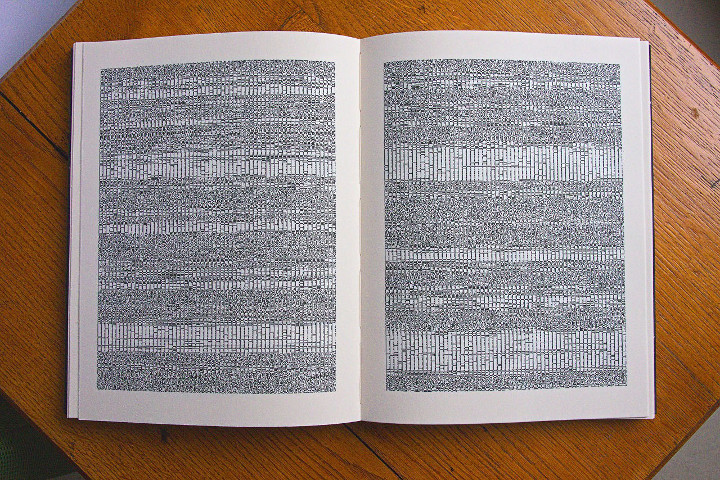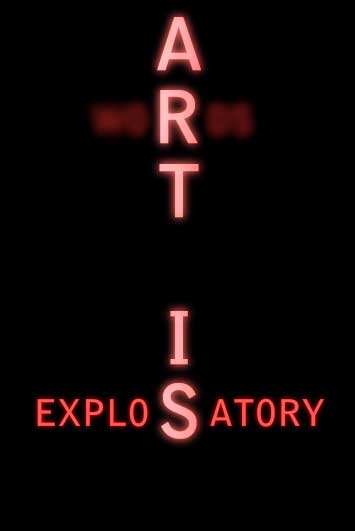La Société Anonyme: The SKOR Codex (2012)
Filed under artist publishing | Tags: · archive, archiving, art, code, data, digital heritage, media art, preservation, print, storage

The SKOR Codex is a printed book which will be sent to different locations on earth. It contains binary encoded image and sound files selected to portray the diversity of life and culture at the Foundation for Art and Public Domain (SKOR), Amsterdam, and is intended for any intelligent terrestrial life form, or for future humans, who may find it. The files are protected from bitrot, software decay and hardware failure via a transformation from magnetic transitions on a disk to ink on paper, safe for centuries. Instructions in a symbolic language explain the origin of the book and indicate how the content is to be decoded.
La Société Anonyme noted that “the package will be encountered and the book decoded only if there will be advanced civilizations on earth in the far future. But the launching of this ‘bottle’ into the cosmic ‘ocean’ says something very hopeful about art on this planet.” Thus the record is best seen as a time capsule and a statement rather than an attempt to preserve SKOR for future art historians. The SKOR Codex is a project by La Société Anonyme.
Published in July 2012
304 pages
Interview with authors (Annet Dekker, Open!, 2014).
Comment (0)Mélanie Hogan: Crashing the Archive: A Research-Creation Intervention into the SAW Video Mediatheque (2012)
Filed under thesis | Tags: · archive, archiving, preservation, storage, video art

“Video Cache is a research creation intervention emerging from my doctoral research into defunct and crashed online archives, in the context of Canadian video art, which has a rich history of self-preservation and of documenting itself as an art movement. From major art galleries to personal collections; Canada has long privileged video as a tool for creative resistance, expression, and experimentation. Video Cache serves to track the SAW Video Mediatheque (based in Ottawa), from its launch to its crash and back online again, by updating its context and addressing in a practical way what it means to ‘activate’ the online archive. Much of my intervention occurred after the crash and during the two years the site was offline. It involved varied methodological entry points including in depth interviews with SAW Video staff and media archaeology to locate digital traces of the site. Key here is Video Cache’s success in simultaneously documenting the project and intervening to address archival loss: while it was the ‘cache’ that made the Mediatheque’s traces visible and re-visit-able, it was the ‘crash’ that signalled its ongoing archival value.” (from Abstract)
PhD thesis
Department of Communication Studies, Concordia University, Montréal, Québec, Canada
April 2012
Journal of Digital Humanities 1 (2): Audience, Substance, and Style (2012)
Filed under journal | Tags: · archive, audience, digital humanities, history

“With this second issue, the Journal of Digital Humanities continues to explore and challenge the composition of the academic journal and our field itself.”
Contributions by Andrew Prescott, Ted Underwood and Jordan Sellers, Diane M. Zorich, Jeremy Antley, Adam Chapman, Jeremiah McCall, Jeremy Antley, Kate Theimer, Miriam Posner, Mia Ridge, Anastasia Salter
Vol. 1, No. 2, Spring 2012
Editors: Daniel J. Cohen and Joan Fragaszy Troyano
Associate Editors: Sasha Hoffman, Jeri Wieringa
Publisher Roy Rosenzweig Center for History and New Media, June 2012
ISSN 2165-6673

